Review of the Martinist Order Part One
An Introduction to the Martinist Order, examining its Rosicrucian roots.
This review is a continuation of a series of examinations that offer a sneak peak into the workings and traditional value of the various esoteric Orders. More specifically this blog series focuses upon the Orders within the western tradition that fall under the mantle of Rosicrucian.
This review places the Martinist tradition under the spotlight
and emphasizes its Rosicrucian links.
 Like most of my Reviews of the Rosicrucian Orders this issue not only focuses on the Order under question but also unfolds the bigger picture of some of the less emphasized aspects of Rosicrucian tradition. Thus in reading each review not only do you learn about the Order itself, but in each entry you’ll also be explosed to another aspect of Rosicrucianism.
Like most of my Reviews of the Rosicrucian Orders this issue not only focuses on the Order under question but also unfolds the bigger picture of some of the less emphasized aspects of Rosicrucian tradition. Thus in reading each review not only do you learn about the Order itself, but in each entry you’ll also be explosed to another aspect of Rosicrucianism.
(For new comers; this post is my latest entry towards an ongoing series known as my ‘Reviews of the Rosicrucian Orders’ where I seek to help students decided which Order is right for them.)
The process of reviewing the Orders is not only a work of passion, as I have my own Order’s interest invested into this series as well. In as much as it is a contribution towards the community it is also an undertaking where I might determine the best path to follow in the process of defining my own Rosicrucian Order as it continues to develop and implements some of the best ideas.
Thus by reviewing the Orders we’ll also see what works, what doesnt and what stinks. This is all aligned with my own personal quest to envision and establish a Rosicrucian Order which is strongly rooted in tradition and is truly aligned to the subtle spiritual properties that gives life to this mysterious enigma.
New readers to my blog need to peruse the following earlier post:
- Reviewing the Rosicrucian Orders.
- Scoring System for the Reviews of the Orders.
- Are the Rosicrucians Really Christian?
- What is Rosicrucian Pansophy.
Each of the above links will help you understand the angle of approach, which strictly speaking uses the earliest phases of the Rosicrucian phenomenon to help define what a Rosicrucian Order SHOULD look like. Based on these traditional ‘pillars’ we can see how far various Orders have either deviated from tradition, maintained this rich heritage or outright flunked.
As my readers know Amorc did quite badly in terms of tradition. But their up comming spiritual score is resonably good. These ‘Traditional Scores’ in the first set of reviews offer insight into how ‘authentic’ (if I may use the word) an Orders is… traditionally speaking.
And let’s agree. You don’t want to join a bogus Order, be that an ego cult, money cult or sex cult… fun as that might be. And even if you ever tried, as your friend, I’d give you a good old fashioned high-school wedgey. All the way up to your shoulders too.
That’s what friends are for. Onwards with the review.
A Colourful Tradition
Of all the reviews the Martinist Order seems to be the most difficult.
Some parties would have you beleive that Martinism is strictly speaking a set in stone and clear cut tradition, all of it relying upon its original founder who wrote several books and letters.
St Martin was the founder and his instructions are quite clear.
However in his writings he gives us continual instruction to read another writer, form whom he himself gained inspirations, and was himself initiated into an underground Elect Priesthood.
This is why after joining and being inititiated into the Martinist Order you might decide one day upon invitation to attend another Martinist group and guess what… they teach that what you have learned so far isnt entirely true and that there is another way ‘as according to the founders.’ Despite what most people think St Martin is not the only source for Martinism.
I’ll explain this clearly in a moment, as this is what makes Martinism so colorful.
You’ve got some groups strictly adhereing to the works of St Martin, and others who look not only at his works, but also those he directs us to read and the influences upon him.
Not only that Martinism continued as an initiatic lineage and new movers and shakers of the movement have left their mark. Its initiation rituals are the most recent addition, being added to the Martinist tradition some two hundred years after its founder.
Some groups are very internal, with lots of meditative work. Operative mysticism is a no-no.
One circle claims that St Martin ‘said don’t do theurgy, follow the inner way’ and the other group says ‘but without his mentor and such occult practice he wouldnt have reached that level.’ And so it goes on. But this is why Martinism is so amazing.
Not only does it have its own teachings, but there is tons of room for adapting it to personal taste. In this review I hope to cover the full spectrum of what is possible for Rosicrucians.
Here are the main movers and shakers of the tradition.
Though the Martinist Order is said to begin with St Martin himself we must first start with his two teachers before meeting the man
Pasqually and the Elu Cohens.
Until 1774 Martines de Pasqually dedicated himself to propogating an occult tradition. Though it took the form of Masonic initiation this particular Order, called the Elu Cohens, or otherwise the ‘Elect Priest of the Universe’ offered both a ritual empowerment which granted the power to operate occult miracles as well as a means of receiving, through those miraculous spiritual contacts, an ordination direct from angels which made the initiate a kind of occult prophet.
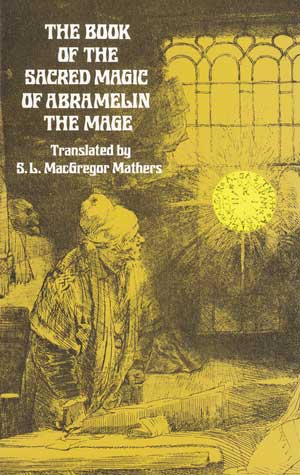 The theurgic operations were given for initiates to undertake mostly alone.
The theurgic operations were given for initiates to undertake mostly alone.
During the private workings of the initiate he was expected to conjur spirits and angelic intelligences which would grant the operator signs and wonders. It was these spiritual signs which served as a means of gauging the initiates progression, their mentors carefully observing what appriations appeared to the operator. Certain signs denoted that the initiate was ready for the next level of work.
The work was undertaken with magical circles, candles, mystical seals and inscriptions. Fasting, orations and prayers to Mary and Christ were invoked for protection. The Order itself was a Cabalistic cult of sorts in that they strongly beleived in the Fall of a Universal Adam.
Pasqually transcribed their secret doctrine in his book the Treatise of the Reintegration of Beings.
It explained that a universal oversoul created by God, known as the Universal Adam, was the true occult Adam which people had forgotten. This Adam was a universal overlord being, which protected the universe and worked against the forces of unbalance. It was also this Universal Adam that fell and shattered into a multitude of sparks which would become the lost and wandering souls of humanity.
Originally this Adam had mighty powers, a spear and the stars as a garment, and not only that, but also had universal duties to cary out maintain the harmony of the universe. But we, as fallen beings, have since lost these ‘primitif powers’ having fallen from grace. The work of the Elect Cohens was to help bring together all the souls of this broken being by aligning humanity to the original construct of this pervasive oversoul. This new harmonisation was called Reintegration.
It goes without saying that this cultis was both Cabalistic and Catholic.
They drew upon the power of Church prayers, psalms, saints and the names of prophets to empower them. Once the initiate had reached a high enough level they worked upon exorcising the forces of darkness away from the sphere of the earth, even helping to raise lost discarnate souls, banished the influence of Satan from humanity, and sought divine instruction from angels. Many members reported seeing spiritual appiritions appear, green clouds, stars and mystic seals appear in the air. In total they were the Elect Priest who fought against spiritual darkness.
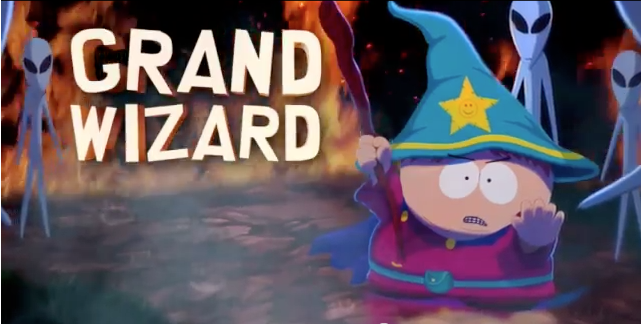
It is here in the Elect Cohens Order that we find the grade of S.I. for Superieur Inconnu, meaning ‘Unknown Superior.’ This also remains the highest grade given in the Martinist Order still today. Though the Martinism today is different and a seperate Order from the Cohens it is quite clear that the Martinist Order initiation has continued using this degree, not only in title but also in its use of empowering initiates through a mystic oridination, despite Saint Martin seeing all initiation as coming only from God.
Thus the Cohens is at least the source for ‘something’ empowering initiates of the M.O.
Some Martinist Orders place less emphasis on their Cohens origins, others more. For example several M.O branches serve as an outer order for several other higher bodies which includes the Elus Cohens initiations. For such groups the Cohens operations and doctrines are the cream of their work, whereby Martinist initiates are raised to a higher system of theurgy.
‘It is to Martines de Pasqually that I owe my introduction to higher truths.
It is to Jacob Boehme that I owe the most important steps I made in these truths.’
Saint Martin.
Jacob Boehme the Tuetonic Philosopher
A humble shoemaker by trade Jacob Boehme was to become a German mystic writing several important volumes on Reintegration and Regeneration. Born 1575 scholars such as Arthur Verselius have commented that his teachings are inseperable from the Rosicrucian phenomena. His writings have largely become known as Theosophy (not the Theosophy of Blavatsky and the Theosophical Society) beginning with his work the Glorious Dawn 1612.
For newcomers to my Rosicrucian blog you will find I constantly recommend reading his writings. However be ye warned, they are a lifetime of contemplation and work.
Unlike most modern books nothing is explained directly. You are required to constantly think, re-read, pray and undertake the mystical workings outlined. At times he is lucidly clear. At others your mind will be lost in a maze as he tries to unfold the laws of the elements and the internal structure of our universe. His writings are alchemical and hermetic.
Most importantly they are not only Christian they are also Sophianic.
Sophia goddess of Wisdom features throughout his works. He explains the souls longings and our phases of repentence through suffering and regeneration through becoming a Second Adam. Thus his works fit well with those of Pasqually who describes the Fallen Adam.
Boehme’s fall and reintegration however are distinctly Hermetic. As with most alchemical inconography the union of the sun and moon to give birth to the Mercury and Philosophers Stone are for him very clear religious mystical experiences. The alchemical putrefaction is shown in his experience of dying within, as the symbolic alchemical Mercury of the Philosphers which he terms he ‘New Will,’ describing a state of being the mystic obtains after being reborn out of alchemical darkness. This New Will however is constantly sacrificed and surrendered until holy Sophia appears.
When she comes after a period of longing the mystic will become ‘psychically pregnant’ and give birth to a new Christ within. As Boehme says we are to become ‘saplings in the vineyard of Chirst.’ This female redeemer also appears in the Rosicrucian Chemical Wedding.
The internal blueprint as to the process of regeneration in fact matches the Rosicrucian manifestos entirely. Both are a mirror of each other which I’ll reveal in my next post. Any Rosicrucian will benefit from a deep study of Boehme, as did St Martin himself when he sought true initiation.
‘All people have one book in common which points to God.
Each has it within themselves, which is the priceless Name of God.
Read these letters in your hearts and you have books enough.’
Jacob Boehme.
Louis Claude de Saint-Martin
St Martin is said to be the source of the actual Martinist Order.
In the traditional history of the Order he is said to have laid his hands upon initiates conferring upon them some sort of mystical blessing. This same laying of the hands is the main source for the Martinist third degree initiation. No formal Order was ever organised by St Martin however his followers aparently called themselves the Friends of St Martin and he is said in some branches of the Order history to have joined the Rosicrucians, which is where this story gets interesting.
St Martin was not satisfied with the magical operations of the Elu Cohens. He considered many such rites and operations fraudulent or the manifestations as misleading spirits. Instead in reading Boehme he found the inner way bore him more fruits towards regeneration.
Though he remained ever respectful of his former master Pasqually he felt that no harm or wrath could come from god through love and devotion by following the inner way, and that the outer way might lead to error. His inner way on the other hand must have at least been agreeable to Godhead, he thought, because at least it was a way of worship. Following his new master Boehme he sought all wisdom through finding the Repairer through his heart.
He wrote a series of treatises annonymously, using the pseudonym Philosophe Inconnu, meaning the ‘Unknown Philosopher.’ This act in itself is also very Rosicrucian. He is also refered to as the Theosopher of Amboise. The majority of his works are dedicated to unvieling Boehme or Theosophy itself. Thus though St Martin is often referred to as ‘the Master’ by modern Martinists his works are in reality to be considered within the vein of Theosophic writings including that of Boehme, Jane Leade, Pordage, William Law and Welling.
Writing thus is considered nearly sacreligious in some circles where Saint Martin is instead elevated almost to the status of prophet. Yet his writings clearly refer us to Jane Lead and Boehme, amongst others, and very little of his writings is actualy anything ‘new.’ I would go so far to say I consider him a watered down version of Boehme, or at least an introduction to Boehme for those who are not quite ready to dive into those more advanced writings.
Without doubt this will upset a few readers. But Martinism is clearly so much more than St Martin. I recommend you read ‘Wisdom’s Children’ by Arthur Verselius for gaining insight into the full spectrum of Theosophy and how closely aligned this is to Rosicrucianism.
Papus and the Martinist Order
Traditional history would have us believe that the Martinist tradition continued from master to student until in 1887 Papus created a formal ‘Martinist Order’ from surviving lines.
The story is that at some point Papus and Chaboseau both realised that they each carrried a lineage of initiation derived from St. Martin. They decided to exchange intiations to strenghthen their own lineages and together created a formal society around that chain.
This new Martinist Order was nothing like that of St Martins, if at all a circle did indeed surround St Martin as their oral tradition says so. As my good friend and R.C historian, Milko Boogaard, recently pointed out the Europeans wanted a ‘more western path so to speak, instead of the Eastern path of Blavatsky, seeing that so many started to favor her book once ‘Isis Unveiled’ was published.’
In this sense the modern Martinist Order was a reaction to the huge success of Blavatsky and her Theosophical Society. Milko continued that the French went on to establish the Martinist Order and the British would establish the Golden Dawn (G.D Review coming soon.)
This being the case the French stream ratified surviving occult traditions under the banner of the M.O. In fact the first Martinist Order had little to do with St. Martin. Papus adapted an open end form of study where anything was possible. He wrote books on the Tarot and Hermeticism which shows the broader flavour of his early Martinist Order compared to that of St. Martin which was distinctly a form of Christian mysticism. As a matter of fact:
Today Martinist Orders study a very broad range of occultism,
much of which Saint Martin himself wouldnt have aproved of.
This is only ‘some’ Orders of course, and why my own initiator refers to this broader system (with three degrees) as ‘Papuism’ by name as opposed to what St Martin intended (one degree) and Christian mysticism.
Even in the writings of Papus we find that his Martinist Order was by far broader in approach than merely adhering to the doctrines of St. Martin alone. He says for example: ‘we shall be Knights of Christ, enemies of violence, opposed to any form of anarchy, in one word, Martinists, as have been our glorious ancestors, Pasqually, Saint Martin and Willermoz!’
This hints at a movement towards a greater scope of the before mentioned teachers.
Interestingly the early M.O of Papus also featured Egytpian styled iconography and temple furniture not unlike Amorc.
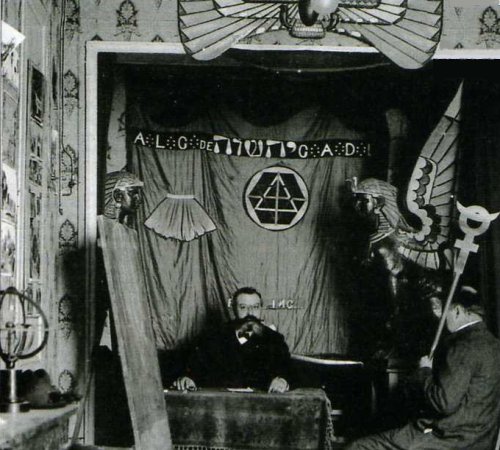 My previous article on the ritual origins of Amorc showed that the distinct Egyptian flavor at Amorc lodges and headquarters was derived from the tradition of Cagliostro and the succeeding Egyptian Rites. The Memphis Misraim was French, however unlike Amorc we find that Papus and his Martinists openly confessed to drawing upon the Egyptian Rites to help give life to their rituals. Most people agree that the first degree in particular as designed by Papus for his M.O is based on the Memphis Misraim.
My previous article on the ritual origins of Amorc showed that the distinct Egyptian flavor at Amorc lodges and headquarters was derived from the tradition of Cagliostro and the succeeding Egyptian Rites. The Memphis Misraim was French, however unlike Amorc we find that Papus and his Martinists openly confessed to drawing upon the Egyptian Rites to help give life to their rituals. Most people agree that the first degree in particular as designed by Papus for his M.O is based on the Memphis Misraim.
Like Amorc and the M.M they use the three sided Shekina altar, and as our community has recently discovered not only is this triple altar a cross Rosicrucian Martinist and Memphis-Mirsraim feature but it is also connected to the first manifesto of the Rosicrucians known as the ‘Reformation of the Whole Wide World by Order of Apollo.’ It has been pointed out that triangular altars and triangular pillars were placed in worship of Apollo. This feature appears to be a central theme connecting the temple to the reformation ideas of Pansophy, Apollo being the god who rules over the liberal arts, the muses and cultural regeneration, making it a temple piece of the R.C manifestos.
What Papus did was to take this Rosicrucian key and the informal spirit of Martinism in the line he carried and translated that spiritual impulse into a formal Order setting, now complete with grades of initiation, standards of operation and ratified by formal codes of conduct. The three degree system became something of a ‘mystical freemasonry’ yet without the architectural symbolism. This new system is the form of Martinism now so far widespread.
Three other Orders that have a chain of initiation going back to St. Martin/R.C d’Orient that have nothing to do with Papus and his new system is the Order of Myriam, an Italian occult healing Order, the Osiris Order of Italty, and the Russian Martinists who hold a strong oral tradition.
There has been some doubt placed on the actual lineage of both Papus and Chaboseau and even if such a lineage to Saint Martin even existed. Serge Caillet stated that Papus made it all up.
Initiates on the other hand experience something very real during initiation, which places the Martinist impulse above the rest of most merely symbolic type rituals. If indeed Saint Martin at all ever did hav a circle around him and passed on an initiation, it was done by the laying of the hands. This actual initiation became the third degree in Papus’ system and in his own words ‘there is only one degree in Martinism, the S.I’ (Unknown Superior or third degree.)
Many meanings have been given to the two lettes signifying this degree. S.I is given as Superieur Inconnu (Sovereign Judge, a degree of the Cohens), Societe des Inities (Society of Initiates), Societe Unconneu (Unknown Society), Sage Inconnu (Sage Unknown) etc. Some have revered to these letters as being the ‘Society of Jesus’ which is very Rosicrucian.
As to the Rosicrucian current flowing from hidden sources to Papus there can be no doubt. One of the most important documents of the Golden Dawn is Book T, an outline of occult Tarot correspondences linking Tarot to the Tree of Life, astrology and Cabalistic mysticism. Book T is also mentioned in the Rosicrucian Fama as one of the ‘books of wisdom’ that Christian Rosenkreuz had brought back to Germany. Even before Papus joined the Golden Dawn his Tarot notes show that he also must have had the same source as Westcott and the Golden Dawn because the same system is clearly present in some of the notes and correspondences. Clearly the G.D and Papus had the same source… a source in his ‘Unknown Superiors’ seems evident.
Robert Ambelain
The last teacher to include in the list of serious movers and shakers of this tradition is Robert Ambelain. Born in 1907 and leaving his earthly life in 1997 he is even more responsible for expanding the scope of what Martinism includes thanks to his merging of several Orders both into the Martinist stream itself and as providing things that went beyond Martinism.
His initial activity was to refound the Order of Pasqually under the name of ‘Ordre Martiniste des Elus Cohens’ during the second world war. His brand of Cohens work drew upon several phases of Pasqually’s work and his reactivated tradition was formed into four degrees:
- Master Elect Cohen (Maitre Elu Cohen)
- Knight of the Orient (Chevalier d’Orient C:: Reau +)
- Commander of the Orient (Commandeur d’Orient M:: Reau +)
- Reau-Croix (Reau-Croix R:: + ::S::J::)
Like Papus our Ambelain saw the Martinist Order as a kind of outer organisation or stepping stone which veiled hidden yet higher Orders and degrees. His continuation of the Kabbalistic Order of the Rose Cross of Papus was established as a kind of occult school containing the pedegree of the worlds finest Rosicurian currents, also given in four degrees:
- S.I.I
- R.C de Kilwinning
- Le Reau Croix
- La RC d’Orient
The idea of this Order is quite powerful. Each of these degrees is normally given at the attainment at the highest/higher levels of other Orders. Here he blended them also into one kind of ‘super Order’ in that his first degree really was the Martinist third degree (and only true degree of Martinism). His R.C d Kilwinning is meant to be the true Rosicrucian degree behind Freemasonry. The third degree is typically the highest level given in the Elu Cohens. His forth degree was that of another Order called the ‘R.C d’Orient’ explained below. In point the OKR+C was intended to be a Rosicrucian super authority, the Martinist Order becoming but a step in a wider tradition.
Ambelain was the spearhead of the movement for some time. He even worked the Egyptian Rite of Memphis Misraim (Egyptian Masonry) from his home. Here we see again the Illuminism of Martinism closely aligned to the activities of the Egyptian Order. The main point is that before our present time ‘Martinism became larger than Saint Martin’ for many and became aligned to a series of esoteric movements, particularly the Rosicrucian current.
The Martinist & Rosicrucian Connection
Many people today consider the Martinist Order as a seperate Order from the Rosicrucians. However something quite interesting happened in 1962 at the official ‘Protocols of the Union of the Martinist Orders’ where we read the following statement:
‘Whereas, it seems clear, from a document found in the archives fo the M.O.E.C, that Papus was the only one of the Supreme Council of the M.O, whose filations came direction from a branch of the Rose Croix, which was the common source of the 18th Century Martinism, and of Louis-Claude de Saint Martins’ particular movement knwon as the Rose-Croix of the Orient.’
As Milko points out in his research the original high council of 12 Martinist masters at the time of Papus within the ‘Order Martiniste’ of 1891 was actually called ‘Conseil Occulte des 12 de la Rose+Croix.’ The members were: Gerard Encausse (Papus), Augustin Chaboseau, Stanislas De Guaita, Lucien Chamuel, Francois-Charles Barlet, Paul Sedir (Yvon Leloup), Paul Adam, Maurice Barres, Jules Lejay, Georges Montieres, Jaques Burget, and Josephin Péladan.
This is the movement around Saint Martin that traditional history says existed. This Order lore also states that he was actually initiated into the Rose Croix d’Orient as a pre-existing Order, but what is this Order and where does it come from? Another question is, is this the same body of the Order of Unknown Philosophers to which Saint Martin is also said to have joined?
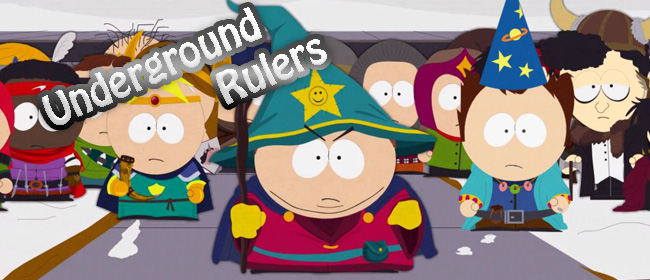
Certainly there are references to this society in the letters of Mikael Sendivogius 1566-1636:
“Greeting to my most worthy Companion of the Society of Unknown Philosophers”
According to Robert Ambelin it was Papus who received a lineage of the R.C d’Orient in the city of Cairo from a person named Lagreze. This individual ran a branch of the Martinist Order in Egypt, which was strangely known as the ‘The Essene Temple.’ Demetrius Platon Semelas, a Greek Martinist, also became a member of this Egyptian Order and then established the European branch of this lineage under the name of the ‘Rose Croix d’Orient.’ According to his oral teachign the Order was founded in 1054 by a certain Photius, then Patriarch of Constantinople.
Here we are getting close to Templar and early Masonic legends.
So important was the R.C d’Orient that both Papus and Semelas together discussed replacing the ‘Kabbalistic Order of the Rose Croix’ with the Rose Croix d’Oirent, to serve as the inner order ‘Cerle Interieur’ of all Martinist Orders throughout the world.
It is a little known fact that R.C d’Orient documents and mystical protocols are hinted at during the Martinist S::I:: or third degree initiation. This is particularly true in several branches of the Martinist Order. Other degree materials also point towards the R.C d’Orient direction without many of its members ever realizing what they are being led towards.
In other words, not only is Saint Martin said to have joined this secret Rosicrucian brotherhood, but also Papus and his friends, fully knowing this designed the degrees of Martinism to prepare their initiates for reception into this ‘true and invisible Rosicrucian order.’
Thus we may conclude that the Martinist Order is in fact a branch of the Rosicrucians.
Next entry: I shall reveal an insider examination of the internal cosmology of the Martinist Order and reveal that its inner schemata in fact matches that of the Rosicrucian legend of he manfestos.
Stay tuned for my Martinist Order Review part two. 🙂
Or, you can read the final Martinist Order Review here.
With bright wishes to your Work, your friend Samuel Robinson

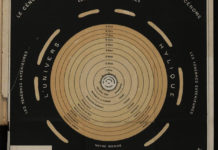
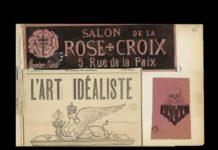
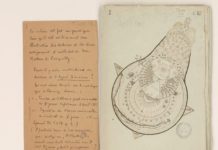







Good start for the newcomer looking for general history on Martinism.